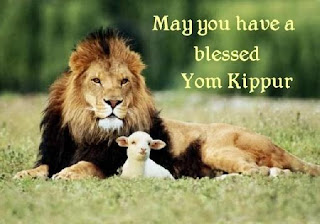In Israel today, over 7,500 children under the age of 18 live in 80 residential group homes around the country, and not with their families. For these children, who were removed from their homes by court order or by the social service authorities because of their parents' serious problems, concepts such as home, family, support and adult protection are not taken for granted.
Yeladim – Fair Chance for Children is a volunteer organization that was founded in 1986 in order to help children in residential group homes. Our non-profit association focuses mainly on activities that are not funded by the ministries of social welfare, education and health, but in coordination with and under the supervision of the Child and Adolescent Department of the Ministry of Social Affairs and Social Services. The main goal is to provide each child with opportunities similar to those enjoyed by children who live with their families, so that they can grow into independent, useful adults.
Yeladim – Fair Chance for Children concentrates on two levels of activity:
- Lobbying to protect the rights of children at risk.
- Fundraising and operation of educational, rehabilitative and therapeutic programs.
The following is a brief description of the main programs operated by Yeladim – Fair Chance for Children:
Remedial Teaching - a program that helps kindergarten and elementary school children catch up and acquire the basic skills needed to cope with the demands of a regular school in the community.
Educational Resource Centers - educational centers aimed at instilling children with values. To achieve this aim, the counselors use games and different social activities, creating enjoyable experiences during the children's free time.
The Guardianship Body - personal, close guardianship by social workers of children in the residential group homes who have no parents or whose parents are completely unable to fulfill this role. The guardians help see to it that these children's needs are fulfilled until adulthood.
Child - Parent Summer Camps - an opportunity for children to spend time with their mothers or fathers at a summer camp, with the aim of renewing or strengthening the family relationships.
Family Ties - aproject, operated in collaboration with the National Insurance Institute and the Ministry of Social Affairs and Social Services, with the aim of promoting and strengthening the ties of parents with their children who live in residential group homes.
Expressive Art Therapy - initiated and funded therapy in the different arts for children in the residential group homes. Yeladim – Fair Chance for Children now provides professional consultation, recruits new therapists, accepts students for fieldwork and holds workshops for therapists.
Cultural Enrichment Program - activities aimed at introducing children living in residential group homes to theater, music, and dance. The professional committee of the program also provides scholarships to artistically talented children.
Sports Project - a program offering children in residential group homes a regular framework for a wide variety of sports activities, which aid the children's physical and emotional development, their leisure activity and offer an opportunity to attain personal excellence.
Volunteers - training and deployment of hundreds of volunteers to assist children in residential group homes in different ways: as host families, friends of the children and more, with the aim of restoring the children's trust in the adult world.
My Album - Since many children in the residential group homes have no mementos of their themselves and their families, Yeladim – Fair Chance for Children aims to provide each child with a personal photo album created over the years, to highlight their unique traits, reinforcing the child's inner strength and sense of belonging and reinforcing their self-image. Volunteer and professional photographers run the project.
The Project for Residential Group Home Graduates with No Family Ties - established by organizations and operated by Yeladim–Fair Chance for Children, the project helps young people who have spent time in placement and still lack family support when they graduate. The assistance focuses on different aspects of life, including housing, supervision (during military service as well), teaching life skills, guidance, professional training and finding work.
Help with the Enlistment of Residential Group Home Graduates in the IDF - personal supervision of graduates of the residential group homes through all stages from pre-enlistment to completion of military service: initial interviews and selection, appropriate assignments, soldiers' conditions and so forth.
The Council Budget - 90% of the income of Yeladim–Fair Chance for Children comes from donations – foundations, private individuals, and the business community in Israel and abroad. 10% of the budget is provided by different government ministries.
Donations -
Donations to Yeladim–Fair Chance for Children are recognized for tax purposes according to section 46 of the Income Tax law.




























